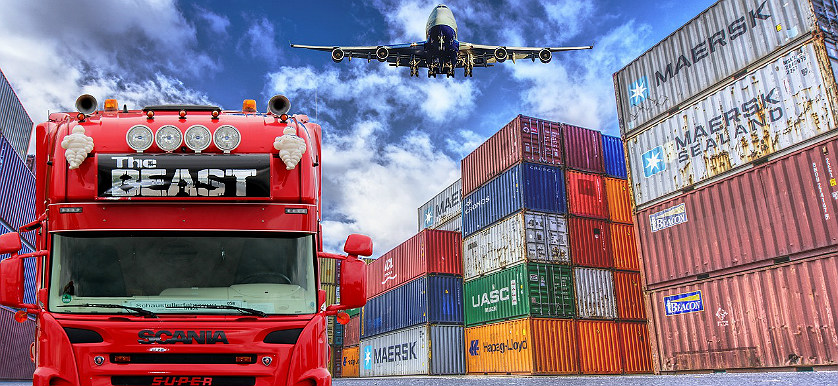6 Supply Chain KPIs You Need to Consider in 2019

Key performance indicators (KPIs) are measurements enterprises use to determine how they’re doing with meeting their goals. High-level KPIs relate to the overall performance of the business, while low-level ones typically evaluate the processes of respective departments.
Regardless of your company’s history and its aims for this year and the foreseeable future, there are some essential supply chain KPIs to track. Here are six of them.
1. Customer Order Cycle Time
One of a company’s primary goals is to decrease the amount of time that passes between when a customer places a purchase order and the company fulfills that request. A supply chain business often uses the customer order cycle time metric to gauge its success with this aim.
You can calculate this supply chain KPI by subtracting the order delivery date from the day the customer created the purchase order.
Alternatively, check the customer order cycle time by subtracting the requested order delivery date from the purchase order creation date. The second option may be more useful if your company has guarantees that center on filling customer orders within a specified timeframe.
2. Disruption Impact
Natural disasters such as hurricanes can significantly interfere with supply chain workflows. Scientists warn that as climate change worsens, the severity of storms’ impacts will likely go up. When supply chain businesses are in disaster-prone areas, they know the best mindset to have regarding preparedness is “not if, but when.” So, one of the newer KPIs often cited for supply chain performance is disruption impact.
It allows you to assess how quickly your company can resume normal operations after an event such as a hurricane or flood. Once you know how fast the business demonstrates resiliency, look deeper to see how the respective disasters affect the company in more generalized ways. Keep in mind that the disruption impact varies depending on the ramifications of the event experienced.
You may also want to break down the disruption impact KPI into two components — time-to-recover (TTR) and time-to-survive (TTS). The first one deals with measuring how long the recovery process takes after a disruption happens. TTS evaluates how long a company can stay sustainable and keep meeting demands following an interruption.

3. Conversion Rate
It’s also essential to engage in lead tracking at your supply chain business. Keeping tabs on the number of leads you have and how they behave as your relationship changes should help your enterprise avoid becoming stagnant. It’s excellent if your company has enough satisfied customers in its pipeline now where it seems like lead acquisition can take a back seat. However, that almost certainly won’t be the case forever.
Using a lead-tracking tool such as a customer relationship management (CRM) interface can also offer numerous business advantages. It allows you to analyze the effectiveness of your company’s marketing strategies and determine how well those efforts align with your business goals. Additionally, a CRM tool can bring more organization to your enterprise by making it easier to identify sales cycles and where your leads exist within them.
You should strongly consider conversion rate as an essential supply chain KPI to track in 2019 and beyond. Start calculating it by dividing the number of conversions by the amount of clicks. By using that formula, you can determine which marketing materials — whether e-books, infographics, white papers or other collaterals — cause the most conversions.
Your organization’s needs help define what constitutes a conversion. In some cases, it might be a form submission, but in others, it occurs when a person orders a product.
4. Inventory Days of Supply
Supply chain professionals know there is a fine line between having too much inventory on hand and not enough to meet customers’ needs. The inventory days of supply metric measures how long it would take your company to run out of supplies if replenishment didn’t happen. Figuring out this metric requires knowing how much inventory you have on hand, plus the average amount used in a day.
Once you divide those two results, you’ll have your answer. However, getting a handle on this KPI is not as straightforward as it may seem at first. That’s because various things can make the demand for items in your inventory go up, resulting in depleting the stock faster than anticipated. It’s best to keep your inventory days of supply metric as low as possible so you don’t risk having unnecessary supplies.
Reducing your days of supply metric may require working with your suppliers and determining how those parties could take care of your orders faster. Also, keep track of internal company operations that tell you how fast your supply chain business can tackle orders once you receive the necessary components.
Manage your customers’ expectations to ensure their waiting time calculates the capabilities of your supplier, plus the length of time needed to go through in-house processes before shipping an item. Forecasting and data analysis software could both help you improve this KPI, especially for seasonal items.
For example, if your company manufactures an item only used during certain times of the year, it could be useful to look at past data. You’ll want to see how inventory needs went up or down based on things like weather patterns or regions of the country. Then, take that information into account while making forecasts this year.

5. Quality Assurance Time
Numerous time-based supply chain KPIs exist, and one you should pay especially close attention to is quality assurance time. It measures how long it takes your company to go through the entire quality assurance (QA) procedure. This kind of KPI could become essential for determining whether your existing process works as well as it should or could.
A 2018 survey of CEOs looked at the QA metrics they care about most. One of the top-ranked measurements was cost of poor quality (COPQ). If you find your quality assurance time is getting shorter, look at the COPQ metric and ensure you’re not decreasing the time spent while sacrificing product quality.
The poll also found that 42% of people who specialize in governance, risk and compliance (GRC) spend a week or more compiling relevant reports. Check to see if there are ways to cut down report creation time for the people who specialize in examining quality-related aspects of your business.
6. On-Time Delivery
In today’s fast-paced society, customers increasingly expect shipments to arrive before or by the times the associated companies promise. That’s why it’s useful to drill down and look at your on-time delivery (OTD) KPI. You can do so by dividing the number of units that reach their destinations on time by the total number of units shipped.
Supply chain companies typically measure OTD by narrowing it down to the units sent out on a given month. If you find a trend that shows your OTD is getting worse, investigate to see whether there are internal practices to blame, slowdowns from external parties or both. Next, consider whether it’s possible to make changes that are within your control to get closer to the ideal OTD rate. If not, you may need to alter the promises made to customers.
Staying on Top of Supply Chain KPIs Could Make Your Business More Sustainable
Once you start measuring these six useful KPIs, it’ll be easier to see if your company’s performance meets expectations or falls short. Knowing how your enterprise stacks up to others or how close it comes to meeting internal goals allows seeing where problems exist, then taking decisive steps to fix them.
By using that approach, it’s possible to make your supply chain business thrive, even during challenging economic conditions.
Image sources:

Tags: KPI, Logistics performance, Supply Chain





